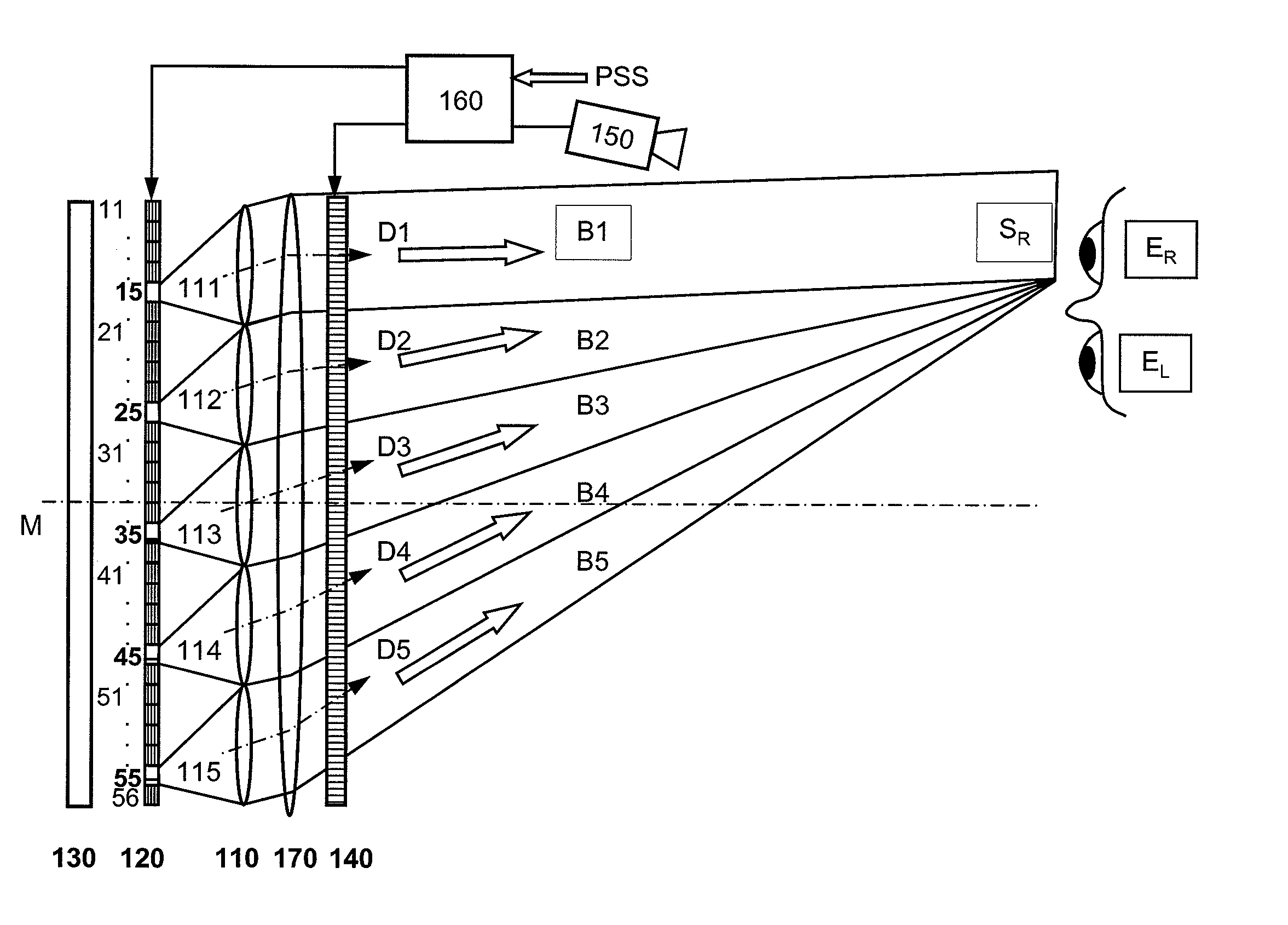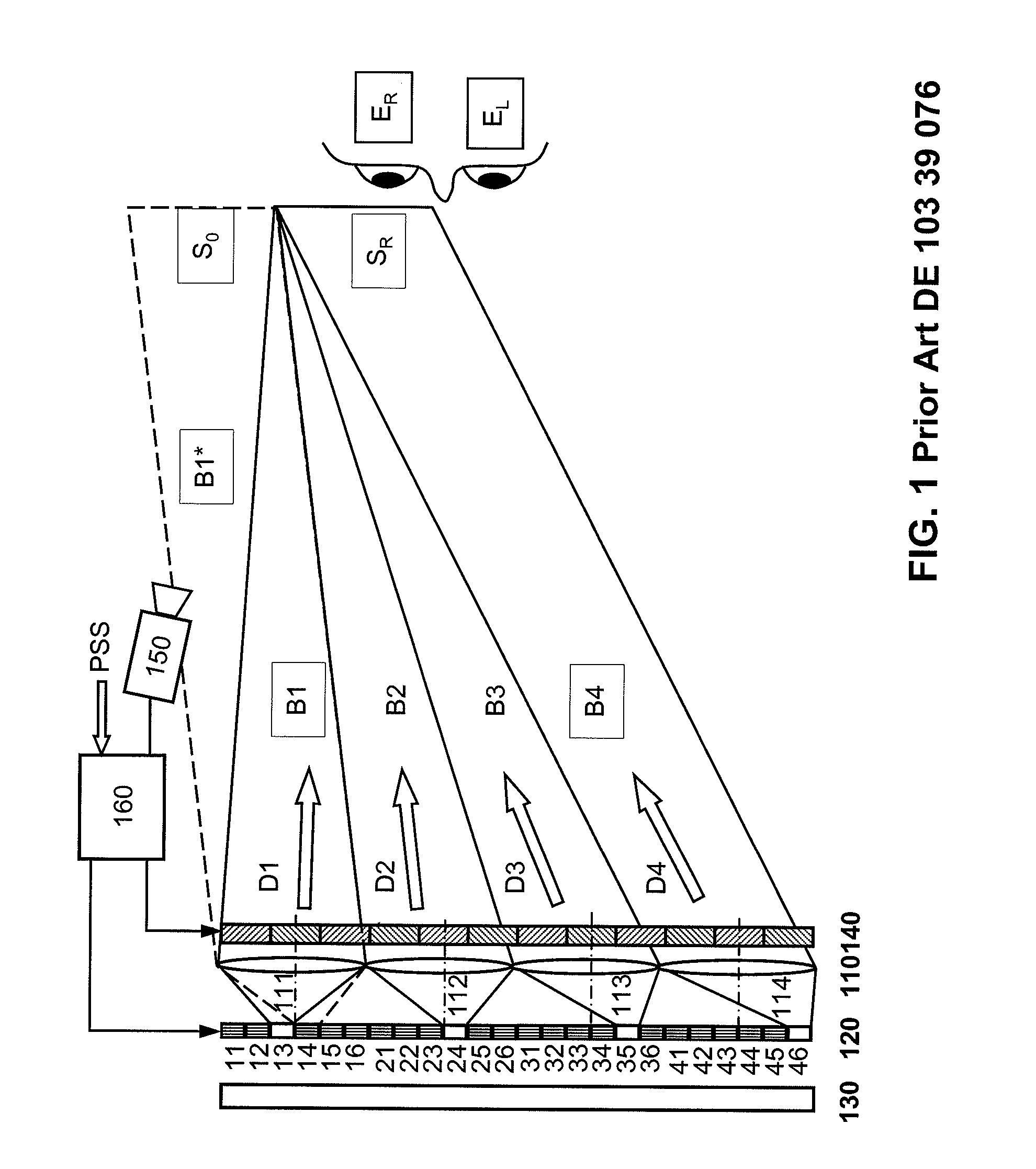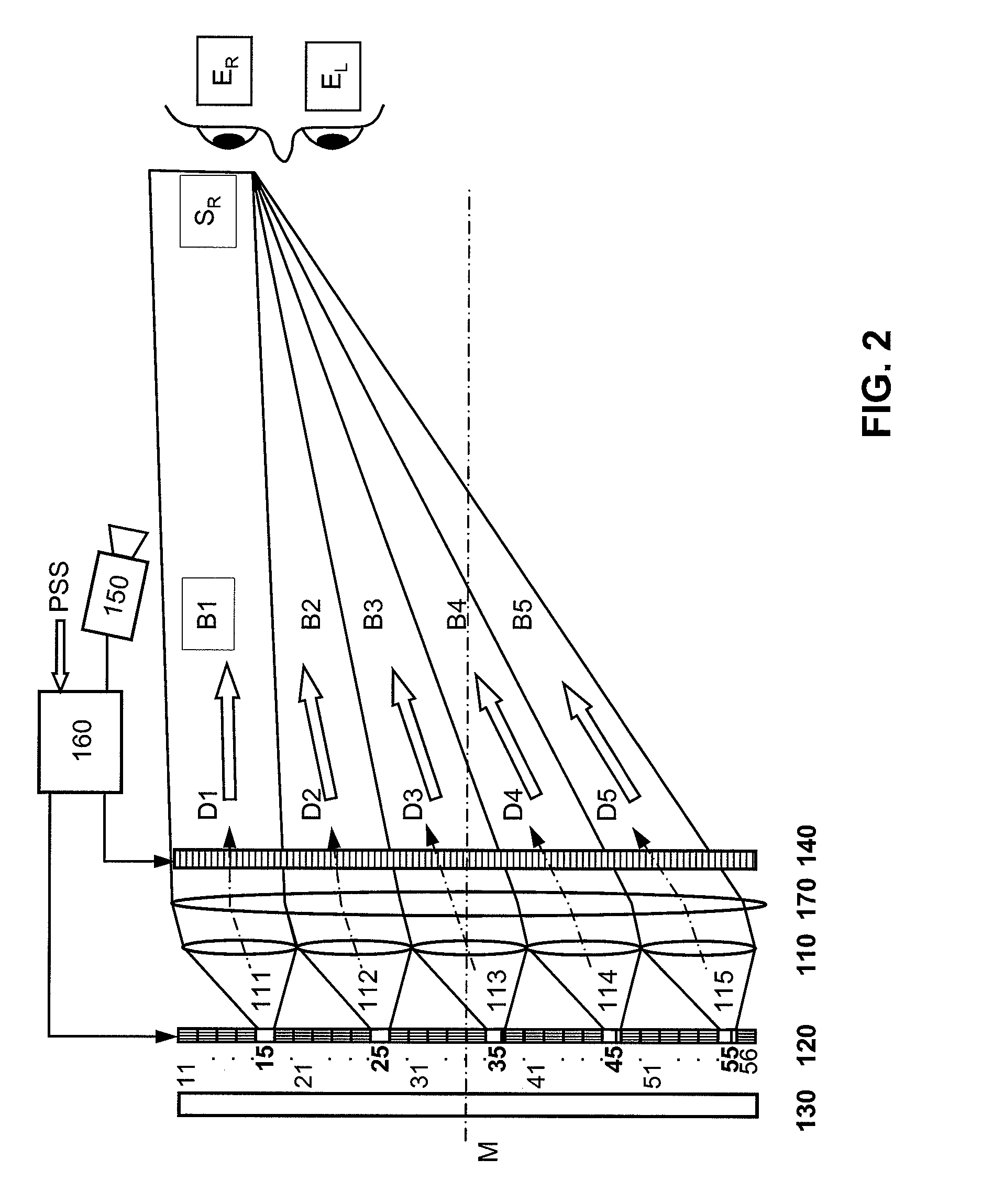Multi-user autostereoscopic display with position tracking
a multi-user, position tracking technology, applied in surveying, navigation, instruments, etc., can solve the problems of multi-user operation, difficult practical realization of such a multi-user display, and disadvantages of using a diffuser plate, so as to achieve low cost, low cost, and low labor intensity
- Summary
- Abstract
- Description
- Claims
- Application Information
AI Technical Summary
Benefits of technology
Problems solved by technology
Method used
Image
Examples
Embodiment Construction
[0049] The autostereoscopic multi-user display according to this invention is described with the help of embodiments and illustrated in the accompanying FIGS. 2-7. Identical functional elements of the autostereoscopic multi-user display according to this invention are denoted by same reference numerals in all figures.
[0050]FIG. 2 shows, with the example of the right eye ER of an observer, the arrangement of elements according to the invention, where numeral 110 denotes an imaging means with lens elements 111-115 and numeral 120 denotes an illumination matrix for generating a bundle of rays B1-B5 for each lens element 111-115. In this embodiment, the illumination matrix 120 is a shutter which uses the light of a large-area light source 130. The shutter contains transmissive illumination elements 11-56. It is an LCD or FLCD panel. In this embodiment, the imaging means 110 is a lenticular. The illumination matrix 120 is disposed about in the focal plane of this lenticular, so that bun...
PUM
 Login to View More
Login to View More Abstract
Description
Claims
Application Information
 Login to View More
Login to View More - R&D
- Intellectual Property
- Life Sciences
- Materials
- Tech Scout
- Unparalleled Data Quality
- Higher Quality Content
- 60% Fewer Hallucinations
Browse by: Latest US Patents, China's latest patents, Technical Efficacy Thesaurus, Application Domain, Technology Topic, Popular Technical Reports.
© 2025 PatSnap. All rights reserved.Legal|Privacy policy|Modern Slavery Act Transparency Statement|Sitemap|About US| Contact US: help@patsnap.com



